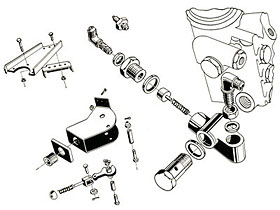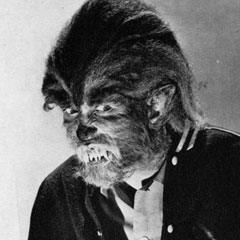
Human vision automatically carves visual objects into parts, and describes objects in terms of these parts and their spatial relationships. For instance, when you look at a staircase you see a collection of parts, namely the stairs, and their spatial relationships, such as "above" and "below." Human vision does not create its parts arbitrarily, but instead creates them in strict accordance to certain geometrical rules that can be stated precisely in the language of differential geometry. If the advanced mathematical knowledge in the occipital and temporal lobes of the brain used by the visual system to construct the parts of objects could somehow get transferred to the frontal lobes where we could have conscious access to them, we would all be mathematical geniuses. It probably does not feel to you like you construct the parts of objects, just as it doesn't feel like you construct objects themselves. But certain neurological problems make it clear that the parts and objects that we see are the parts and objects we construct. In Williams syndrome, for instance, the patient can draw parts of an object, but can't assemble them into a coherent object. If asked to draw an elephant, a Williams patient can draw a trunk, an ear, legs and so on, but cannot put them into a recognizable elephant. Instead the parts are placed in random, or at least incorrect, spatial relationships.

An even more disturbing condition is paraprosopia. When looking at a human face, the paraprosopic first sees the face as it appears normally. But with continued viewing, the paraprosopic then sees the face undergo a grotesque transformation. The ears become pointed, the eyes become menacing, the eyebrows grow bushy, and the teeth grow into fangs. The face becomes transformed into a horrific vision resembling a werewolf. But this transformation is remarkable, because it is not a single distortion applied to the whole image of the face, as though the whole face were being stretched, or twisted, or warped. Instead the transformation is done separately to individual parts of the face. The transformation of the eyebrows, to become more bushy eyebrows, is done only to the eyebrows and not to the teeth. The transformation to the teeth, to become longer fangs, is done only to the teeth. Thus the paraprosopic's transformation is a sophisticated part-by-part transformation. The parts are first created normally, and then refashioned separately to create a nightmare.